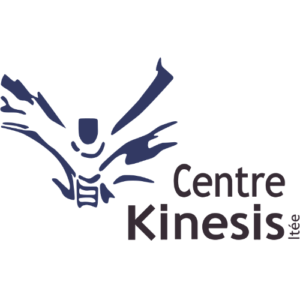Source: FQM
This is the most classic and popular technique in the West.
Swedish massage is a sequence of maneuvers applied to muscle mass or joints and used to restore tired, sluggish or inhibited muscles.
It aims to maximize the body's capacity for action, improves blood circulation as it promotes the return of blood to the heart and improves lymphatic circulation, cellular nutrition and elimination.
Swedish massage harmonizes tensions and stimulates the person's self-regulating functions by calling on their self-healing power.
1- History
2- Applications and effects
3- Indications and contraindications
4- Course of a session
This massage is of Swedish origin, a pioneering country in the field of personal hygiene. Pehr Heinrik Ling, is the founder of the bases of this technique in the XNUMXth century. Having the objective of creating on the body the same effects as those obtained by gymnastics, it generates a specific order and type of maneuvers, which will be designated as Swedish massage. This massage is based on classic physiotherapy consisting of sports, rehabilitative and medical massage.
The main function of Swedish massage is to correct muscular attitudes. It includes the nine recognized maneuvers:
light or deep effleurage (plays at fluid level) and stretching (specifically for muscles)
the treading
drains
kneading
friction
the percussion
vibrations
the tremors
joint work
The basic rule is to always bring the blood back to the heart, i.e. clockwise, using centripetal force. The warmth of the hand dilates the blood vessels and increases their flow.
The musculature of the person using Swedish massage must have its functional capacity intact. In the case of a muscular malfunction, the massage therapist works instead on an inhibited or intoxicated muscle. Instead of working directly on the injured muscle, it works on the antagonist muscle for smoothness.
The massage therapist in Swedish deals first with the muscle and then with everything related to it: the aponeuroses, the nervous apparatus, the bones, the lymphatic system and all the liquids of the body. If the joint is painful, it massages the attachments of the muscle, the tendons or the ligaments.
Swedish massage acts more on the locomotor (muscles and joints) and liquid (blood and lymph) systems. As long as people have a healthy life, the effect will be relaxing, rejuvenating, and the client will be able to resume their normal life immediately. In a very stressed person, the massage can cause a period of drowsiness. It should be noted that if the client has eaten or drunk too copiously beforehand, the beneficial effects of the Swedish can be reduced.
Swedish massage rids the muscle of its toxins by draining it. It can also help regulate intestinal peristalsis by regulating muscle tension in the back and stomach.
Indications and contraindications
Swedish massage is for anyone concerned with physical strength or muscle tone. It can help physically correct a muscular condition.
It is also suitable for anyone whose physical activity is insufficient by toning the muscles and preventing stagnation of blood circulation. It is also suitable for athletes in whom it accelerates the healing of sore muscles. It relaxes nervous and stressed people by regenerating their nervous system, thus improving the quality of their sleep.
Swedish massage does not claim to cure disease; at most, it will help relax the person experiencing them. In cases of congenital problems, it is of no help. However, when there is a postural problem, it can complement the action of another bodily approach.
There are several contraindications to Swedish massage, but some are absolute, such as: fever (+ 37.5°C), all infectious or contagious diseases, hemophilia, any history of heart problems.
It is important, in case of doubt, to consult a doctor so that he gives his agreement or not to perform the massage.
The therapist in Swedish is recognized by his ability to follow the breath, the regular pressure of his hands against the body, the continuity of the massage and his ability to envelop the body.
During the session in Swedish, the massage therapist uses oil to promote continuity of movement. The client can keep his underwear and the therapist works with sheets and towels. The massage is given on a regular massage table. The atmosphere in which the session takes place is healthy and pleasant.
Usually, the massage therapist's gestures in Swedish are forceful and voluntary. However, it is important to specify that the Swedish massage is a curve, that is to say that the massage therapist always begins his massage gently and that he will also end it gently. It is a dynamic and directive approach.
The massage usually ends with a rest period of variable duration. The client can then taste the benefits of the energy maneuvers of Swedish massage.
As a general rule, Swedish massage is either very standardized or very personalized. As it is the basis of several bodily approaches, it has been transformed or adapted many times to the personal practice of each massage therapist.
Therapist practicing this technique:
Marieta Tisheva
Alexander Benjamin
Pascale Alexander
Geraldine Gallard
Salomee Trudel
Melissandre Wu

Leave a Reply
Want to join the discussion?Feel free to Contribute!